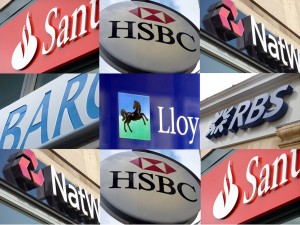 Australia was one of the few economies that seemed to be somewhat insulated from the 2008/09 recession and credit crunch. However, with the UK now back in recession and global economic conditions worsening in much of Europe, Australia has now joined the list of countries that are experiencing economic conditions that are ‘weaker than forecast’.
Australia was one of the few economies that seemed to be somewhat insulated from the 2008/09 recession and credit crunch. However, with the UK now back in recession and global economic conditions worsening in much of Europe, Australia has now joined the list of countries that are experiencing economic conditions that are ‘weaker than forecast’.
Today’s world involves economies that are increasingly interdependent, hence the spread of the world economic slowdown. As such, with weak global demand, Australia has started to feel the effects, with demand for its goods and raw materials falling. This has led Australia’s central bank – the Reserve Bank of Australia – to cut its key interest rate (the ‘cash rate’) by more than expected. The rate had been at 4.25% and it was widely believed that a 0.25 percentage point cut would occur. However, the central bank cut the cash rate rate to 3.75% to counter the weakening conditions. The Reserve Bank said:
“This decision is based on information received over the past few months that suggests that economic conditions have been somewhat weaker than expected, while inflation has moderated …Growth in the world economy slowed in the second half of 2011, and is likely to continue at a below-trend pace this year.”
Banks’ interest rates have been falling in Australia for the past few months and this latest cut will do much to help financially squeezed households. Data show that Australian house sales have fallen, as have house prices, and retail sales have fared little better.
Lower interest rates are often a tool used to steer inflation and the Australian central bank may not have been as willing to cut rates had the inflation rate not come down in recent months. Keeping consumer prices under control remains a top priority for the central bank and so it will be interesting to see the impact that these rate cuts will have on the Australian economy.
Articles
Australia cenbank surprises with aggressive half point rate cut Reuters, Wayne Cole (1/5/12)
Australia cuts rates by than forecast to 3.75% BBC News (1/5/12)
Banks unlikely to pass on full rate cut The Australian, Wall Street Journal, Peter Trute (1/5/12)
Australia cuts rate to support economy Financial Times, Neil Hume (1/5/12)
Australia slashes interest rates by 0.5pc to boost economy The Telegraph (1/5/12)
Australia cuts interest rates as economy slows Guardian, Phillip Inman (1/5/12)
Banks must pass on rate cut: businesses Sydney Morning Herald, Ehssan Veiszadeh (1/5/12)
Bond prices rally after rate cut Sydney Morning Herald (1/5/12)
Surplus remains appropriate: Swan Sydney Morning Herald, Colin Brinsden (1/5/12)
Webcasts
 Reserve Bank of Australia Cuts Rates by 50 Basis Points to 3.75% CNBC video, Lauren Rosborough (1/5/12)
Reserve Bank of Australia Cuts Rates by 50 Basis Points to 3.75% CNBC video, Lauren Rosborough (1/5/12)
 Further `Modest’ RBA Easing Possible, ANZ Says Bloomberg, Tony Morriss (1/5/12)
Further `Modest’ RBA Easing Possible, ANZ Says Bloomberg, Tony Morriss (1/5/12)
 Australia’s central bank shifts focus to growth BBC News, Duncan Kennedy (1/5/12)
Australia’s central bank shifts focus to growth BBC News, Duncan Kennedy (1/5/12)
Questions
- Which factors will a central bank consider when setting interest rates?
- Explain the components of aggregate demand that will be affected by a lower rate of interest.
- Using diagrams to illustrate the process, explain both the interest-rate and the exchange-rate transmission mechanisms of the fall in interest rates.
- How are interest rates used to target inflation?
- How will lower rates of interest help the Australian economy recover from weakening global economic conditions?
- Why are Australia’s banks unlikely to pass on the full rate cut to consumers?
- Why did bond prices rise and the Australian dollar depreciate after the rate cut? Why does this suggest that a 0.5% cut was greater than anticpated by markets?
 How much value do you place on that wonderful long weekend that a Bank holiday brings? The extra lie in; the ensuing 4 day week; the time you spend with your family. Some would say it’s invaluable – you can’t put a price on it. But those some people would not be economists! Each Bank holiday is worth about £2bn – at least that’s how much it costs the economy.
How much value do you place on that wonderful long weekend that a Bank holiday brings? The extra lie in; the ensuing 4 day week; the time you spend with your family. Some would say it’s invaluable – you can’t put a price on it. But those some people would not be economists! Each Bank holiday is worth about £2bn – at least that’s how much it costs the economy.
According to the Centre for Economics and Business Research, if the UK got rid of its Bank holidays, GDP would increase by approximately £18bn.
Some businesses will do well out the Bank holidays, but according to the research, the sectors of the economy that suffer are far greater, causing losses in productivity and hence in GDP. Indeed, the extra Bank Holiday we had last year for the Royal Wedding is thought to have been part of the cause for the slow down in growth to 0.1% during the second quarter of 2011.
Based on this data, there are unsurprisingly concerns that the extra Bank holiday this year for the Queen’s Diamond Jubilee could also cost the economy. Not particularly good news, considering how vulnerable the economy currently is. Although the Queen’s Diamond Jubilee will undoubtedly generate huge amounts of spending, it is thought that this will be more than offset by the sectors that are expected to lose out because of the loss in working hours and hence productivity.
Given the cost of Bank holidays to the economy, the CEBR says that they should be spread more evenly throughout the year. Is this the solution &ndash if one is needed – or should they be abolished altogether! The following articles consider the issue.
Do we really need bank holidays? Asks CEBR Telegraph, Emily Gosden (30/10/11)
Bank holidays ‘cost economy £18bn’ Independent, John Fahey (9/4/12)
Bank holiday costs UK economy £2.3bn Sky News, Tadhg Enright (9/4/12)
Bank holidays ‘cost economy £19bn’ BBC News (9/4/12)
Bank holidays cost UK economy £18bn and ‘should be spread out’ Mail Online (9/4/12)
Questions
- How could we use marginal utility theory to measure the ‘value’ of a Bank holiday?
- Which sectors will generally benefit from Bank holidays?
- Which areas of the economy are likely to contribute towards lost output because of a Bank holiday?
- Why does CEBR suggest that spreading out Bank holidays more evenly across the year would be less costly for economic growth?
- How can the value of lost output during one day be calculated?
- Does a Bank holiday add to somebody’s well-being? How could we measure this?
 Between December 2007 and March 2009, the Bank of England reduced Bank Rate on several occasions in order to stimulate the economy and combat recession. By March 2009, the rate stood at a record low of 0.5%. Each month the Monetary Policy Committee meets to decide on interest rates and since March 2009, the members’ decision has consistently been that Bank Rate needs to remain at 0.5%.
Between December 2007 and March 2009, the Bank of England reduced Bank Rate on several occasions in order to stimulate the economy and combat recession. By March 2009, the rate stood at a record low of 0.5%. Each month the Monetary Policy Committee meets to decide on interest rates and since March 2009, the members’ decision has consistently been that Bank Rate needs to remain at 0.5%.
Although the UK economy has been making tentative steps towards recovery, it is still in a very vulnerable state. Last month, the Bank of England extended its programme of quantitative easing to a total £325bn stimulus. This, together with the decision to keep interest rates down and with the shock fall in manufacturing output contributing towards first quarter growth of just 0.1%, is a key indication that the UK economy is still struggling, even though the central bank thinks it unlikely that the UK will re-enter recession this year.
Monetary policy in the UK has been very much geared towards stimulating economic growth, despite interest rates typically being the main tool to keep inflation on target at 2%. The problem facing the central bank is that economic growth and inflation are in something of a conflict. Low interest rates to stimulate economic growth also create a higher inflation environment and that is the trade-off the economy has faced. Inflation has been well above its target for some months (a high of 5.2% in September 2011), and the low interest rate environment has done little to deflate the figure. After all, low interest rates are a monetary instrument that can be used to boost aggregate demand, which can then create demand-pull inflation. However, inflation is now slowly beginning to fall, but this downward trend could be reversed with the sky high oil prices we are recently experiencing. If inflation does begin to creep back up, the Monetary Policy Committee will once again face a decision: keep Bank Rate low and continue with quantitative easing to stimulate the economy or increase Bank Rate to counter the higher rate of inflation.
The data over recent months has been truly inconsistent. Some indicators suggest improvements in the economy and the financial environment, whereas others indicate an economic situation that is moving very quickly in the wrong direction. A key factor is that the direction the UK economy takes is very much dependent on the world economy and, in particular, on how events in the eurozone unfold. The following articles consider some of the latest economic developments.
UK economy grew 0.1% to avoid recession, says NIESR Guardian, Katie Allen (5/4/12)
UK interest rates held at 0.5% BBC News (5/4/12)
UK just about avoided recession in Q1, NIESR says Telegraph, Angela Monaghan (5/4/12)
Bank of England keeps interest rates on hold at 0.5pc Telegraph (5/4/12)
UK economy ‘weak but showing signs of improvement’ BBC News (3/4/12)
Bank of England holds on quantitative easing and interest rates Guardian, Katie Allen (5/4/12)
Faith on Tories on economy hits new low Financial Times, Helen Warrell (6/4/12)
Questions
- Which factors will the Monetary Policy Committee consider when setting interest rates?
- Using a diagram to help your answer, illustrate and explain the trade-off that the MPC faces when choosing to keep interest rates low or raise them.
- What is quantitative easing? How is it expected to boost economic growth in the UK?
- Which factors are likely to have contributed towards the low growth rate the UK economy experienced in the first quarter of 2012?
- Explain the trends that we have seen in UK inflation over the past year. What factors have caused the figure to increase to a high in September and then fall back down?
- What do you expect to happen to inflation over the next few months? To what extent is your answer dependent on the MPC’s interest rate decisions?
- Although the official figures suggest that the UK avoided a double-dip recession, do you agree with this assessment? Explain your answer.
 With the financial crisis came accusations towards the banking sector that they had taken on too many bad risks. Banks were lending money on more and more risky ventures and this in part led to the credit crunch. Since then, bank lending has fallen and banks have been less and less willing to take on risky investments.
With the financial crisis came accusations towards the banking sector that they had taken on too many bad risks. Banks were lending money on more and more risky ventures and this in part led to the credit crunch. Since then, bank lending has fallen and banks have been less and less willing to take on risky investments.
Small businesses tend to fall (rightly or wrongly) into the category of high risk and it is this sector in particular that is finding itself struggling to make much needed investments. All businesses require loans for investments and improvements and if the banking sector is unable or unwilling to lend then these improvements cannot take place.
Quantitative easing has been a key response across the world to the credit crisis to encourage banks to begin lending to each other and to customers. A new government backed scheme worth £20bn aims to increase bank lending to small and medium sized enterprises (SMEs). By guaranteeing £20bn of the participating banks’ own borrowing, lenders will be able to borrow more cheaply than normal. As the banks (so far including Barclays, Santander, RBS and Lloyds Banking Group) can borrow at a cheaper rate, they will therefore be able to pass this on to the businesses they lend to. Under this National Loan Guarantee Scheme (NLGS), businesses will be able to borrow at interests rates that are 1 percentage point lower than those outside the scheme. £5bn will initially be made available with subsequent installments each of £5bn to come later.
With the Budget looming, the Chancellor is keen to show that the government is delivering on its promise to give smaller businesses access to finance at lower interest rates. If this initiative does indeed stimulate higher lending, it may be a much needed boost for the economy’s faltering economic growth. Criticisms have been leveled at the scheme, saying that although it is a step in the right direction, it can by no means be assumed that it will be sufficient to solve all the problems. In particular, the NLGS is unlikely to provide much help for those small businesses that can’t get finance in the first place, irrespective of the cost of the borrowing. Furthermore some banks, notably HSBC, have chosen not to participate in the scheme, due to it not being commercially viable. The overall effect of this scheme will take some time be seen, but if it is effective, it could give the economy and the small business sector a much needed boost.
Banks to join credit-easing scheme Associated Press (20/3/12)
Credit easing: small businesses to get £20bn of guaranteed cheap loans Telegraph, Harry Wilson (20/3/12)
Bank lending scheme targets small businesses BBC News (20/3/12)
Move over Merlin, credit easing has arrived Independent, Ben Chu (20/3/12)
Credit easing injects £20bn into small firms Sky News (20/3/12)
UK launches small firm loan scheme, critics want more Reuters, Fiona Shaikh (20/3/12)
Osborne’s big plan: £20bn for small businesses Independent, Andrew Grice and Ben Chu (20/3/12)
George Osborne launches new scheme to boost lending to businesses Guardian, Larry Elliott (20/3/12)
Questions
- What is credit easing? Has the government’s previous credit easing had the intended effect?
- Why are small and medium sized enterprises normally seen as risky investments?
- Briefly explain the thinking behind this National Loan Guarantee Scheme.
- What are the criticisms currently levelled at this scheme? To what extent are they justified?
- Why has HSBC said that the scheme is not commercially viable for the bank?
- Explain why this scheme could provide a stimulus to the UK economy.
 Unemployment figures for the UK have been going in the wrong direction for some time. With consumer expenditure, investment and hence aggregate demand remaining low, job creation has been severely lacking. However, 2 pieces of news have emerged in the last couple of days, which as David Cameron said was ‘a massive confidence boost for the UK economy’. Tesco and Nissan have both announced the creation of thousands of new jobs.
Unemployment figures for the UK have been going in the wrong direction for some time. With consumer expenditure, investment and hence aggregate demand remaining low, job creation has been severely lacking. However, 2 pieces of news have emerged in the last couple of days, which as David Cameron said was ‘a massive confidence boost for the UK economy’. Tesco and Nissan have both announced the creation of thousands of new jobs.
Over the next 2 years, Tesco has said that it will create 20,000 new jobs through store improvement and the opening of new stores. Whilst it is not clear how many will be full-time, part-time or apprenticeship placements, it still represents net job creation. This huge investment represents what many are calling a ‘fight-back’ from Tesco, who issued its first profit warning in 20 years, following weak Christmas trading. That announcement slashed their shares by over £5bn and is perhaps partly responsible for this planned investment.
Despite this good news, criticisms have emerged that the major supermarkets are simply inflating the job creation figures and that the actual number of new jobs will be significantly less than the 20,000 suggested. This follows allegations made towards Asda, who claimed to have created 30,000 jobs. However, evidence from records at Companies House suggests that new job creation by the company was closer to 7,000. Whatever the true figure, it still means new jobs, which can only help UK unemployment data.
In addition to this, Nissan has also announced that it will be creating 2,000 new jobs, as it begins production on a new model at its Sunderland factory. The jobs will be created as part of a £125m investment, including a £9.3m grant from the government. This is especially good news, given the area where many of these jobs will emerge. The North East is a region that has been hit particularly hard by the recession and the grant from the government has come from its regional growth fund. Nissan has said that even in hard economic times, it is possible to sell cars, as long as they are competitively priced. Neither of the plans discussed above will create jobs immediately, but perhaps the key is that it creates confidence, which is a rarity in the UK with the current economic situation. The following articles consider these job creation plans and their wider implications.
Tesco plans to create 20,000 UK jobs over 2 years BBC News (5/3/12)
Tesco to create 20,000 jobs in UK fight-back Telegraph, Jamie Dunkley (6/3/12)
Tesco’s UK boss defends ‘new jobs’ claims Sky News (5/3/12)
Tesco to freshen up with 20,000 new staff Financial Times, Andrea Felsted (5/3/12)
Now Tesco creates 20,000 jobs – with pay Independent (9/5/11)
Nissan to build new car in Sunderland BBC News (6/3/12)
Nissan pledges 2,000 new jobs at North East plant Sky News, Gerard Tubb (6/3/12)
Nissan Invitation compact car set to create 2,000 jobs Telegraph, Roland Gribben and David Millward (6/3/12)
Nissan to create 2,000 new jobs by building compact car in Sunderland Guardian, Dan Milmo(6/3/12)
Questions
- Explain the process by which net job creation should provide a boost to the economy.
- Will these new jobs have any impact on the government’s budget deficit?
- Why is there concern that the supermarkets are inflating the employment creation figures?
- What type of unemployment has been created by the recession? Why have certain areas, such as the North East been affected so badly by the recession and austerity measures?
- Which factors could have led to Tesco’s weaker trading figures towards then end of 2011? Why did this lead to a £5bn loss in the value of the group’s shares?
- Nissan has said that cars can be sold as long as they are competitively priced. To what extent do you think price is the main competitive weapon in the market for cars and in the supermarket industry?
 Australia was one of the few economies that seemed to be somewhat insulated from the 2008/09 recession and credit crunch. However, with the UK now back in recession and global economic conditions worsening in much of Europe, Australia has now joined the list of countries that are experiencing economic conditions that are ‘weaker than forecast’.
Australia was one of the few economies that seemed to be somewhat insulated from the 2008/09 recession and credit crunch. However, with the UK now back in recession and global economic conditions worsening in much of Europe, Australia has now joined the list of countries that are experiencing economic conditions that are ‘weaker than forecast’. Reserve Bank of Australia Cuts Rates by 50 Basis Points to 3.75% CNBC video, Lauren Rosborough (1/5/12)
Reserve Bank of Australia Cuts Rates by 50 Basis Points to 3.75% CNBC video, Lauren Rosborough (1/5/12) Further `Modest’ RBA Easing Possible, ANZ Says Bloomberg, Tony Morriss (1/5/12)
Further `Modest’ RBA Easing Possible, ANZ Says Bloomberg, Tony Morriss (1/5/12) Australia’s central bank shifts focus to growth BBC News, Duncan Kennedy (1/5/12)
Australia’s central bank shifts focus to growth BBC News, Duncan Kennedy (1/5/12)


